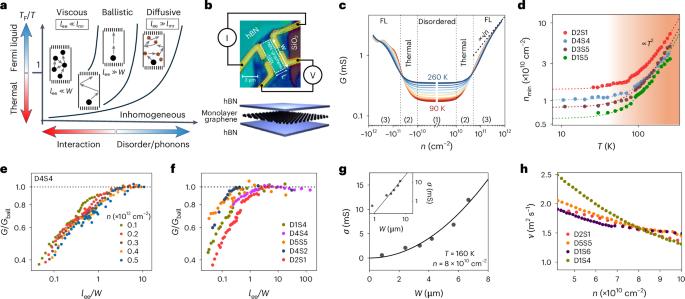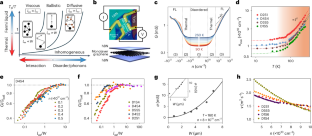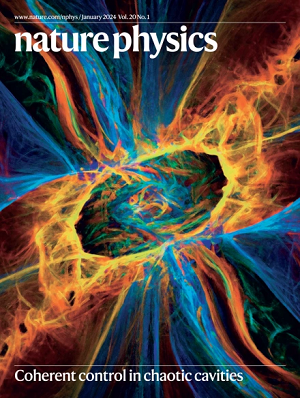超净石墨烯中电荷和热流量子临界流的普遍性
IF 18.4
1区 物理与天体物理
Q1 PHYSICS, MULTIDISCIPLINARY
引用次数: 0
摘要
在狄拉克点附近,石墨烯预计存在于量子临界狄拉克流体状态,其中电荷和热量的流动可以用特征直流电导率和热力学变量(如熵和焓密度)来描述。虽然在最先进的石墨烯器件中已经报道了类似流体的粘性电荷流动,但电导率的值,预测是量子化的,并且仅由临界点的普适类决定,到目前为止还没有实验建立。在这里,我们通过结合接近狄拉克点的高质量器件的电导率和热传导率,发现了石墨烯输运中的量子临界普遍性。我们发现它们是负相关的,正如相对论流体力学所期望的那样,并且特征电导率收敛于量子化值。我们还观察到对Wiedemann-Franz定律的严重违反,在低温下接近狄拉克点的地方,洛伦兹数超过了半经典值200多倍。在高温下,在最干净的设备中,接近狄拉克点的有效动态粘度与熵密度比接近最小粘性量子流体的动态粘度与熵密度比在四倍之内。本文章由计算机程序翻译,如有差异,请以英文原文为准。


Universality in quantum critical flow of charge and heat in ultraclean graphene
Close to the Dirac point, graphene is expected to exist in a quantum critical Dirac fluid state, where the flow of both charge and heat can be described with a characteristic d.c. electrical conductivity and thermodynamic variables such as entropy and enthalpy densities. Although the fluid-like viscous flow of charge has been reported in state-of-the-art graphene devices, the value of conductivity, predicted to be quantized and determined only by the universality class of the critical point, has not been established experimentally so far. Here we have discerned the quantum critical universality in graphene transport by combining the electrical and thermal conductivities in very high-quality devices close to the Dirac point. We find that they are inversely related, as expected from relativistic hydrodynamics, and the characteristic conductivity converges to a quantized value. We also observe a giant violation of the Wiedemann–Franz law, where the Lorentz number exceeds the semiclassical value by more than 200 times close to the Dirac point at low temperatures. At high temperatures, the effective dynamic viscosity to entropy density ratio close to the Dirac point in the cleanest devices approaches that of a minimally viscous quantum fluid within a factor of four. Critical behaviour is expected in graphene when the carrier density is tuned to the Dirac point. Now, universality associated with the critical point is observed in electronic and thermal transport.
求助全文
通过发布文献求助,成功后即可免费获取论文全文。
去求助
来源期刊

Nature Physics
物理-物理:综合
CiteScore
30.40
自引率
2.00%
发文量
349
审稿时长
4-8 weeks
期刊介绍:
Nature Physics is dedicated to publishing top-tier original research in physics with a fair and rigorous review process. It provides high visibility and access to a broad readership, maintaining high standards in copy editing and production, ensuring rapid publication, and maintaining independence from academic societies and other vested interests.
The journal presents two main research paper formats: Letters and Articles. Alongside primary research, Nature Physics serves as a central source for valuable information within the physics community through Review Articles, News & Views, Research Highlights covering crucial developments across the physics literature, Commentaries, Book Reviews, and Correspondence.
 求助内容:
求助内容: 应助结果提醒方式:
应助结果提醒方式:


